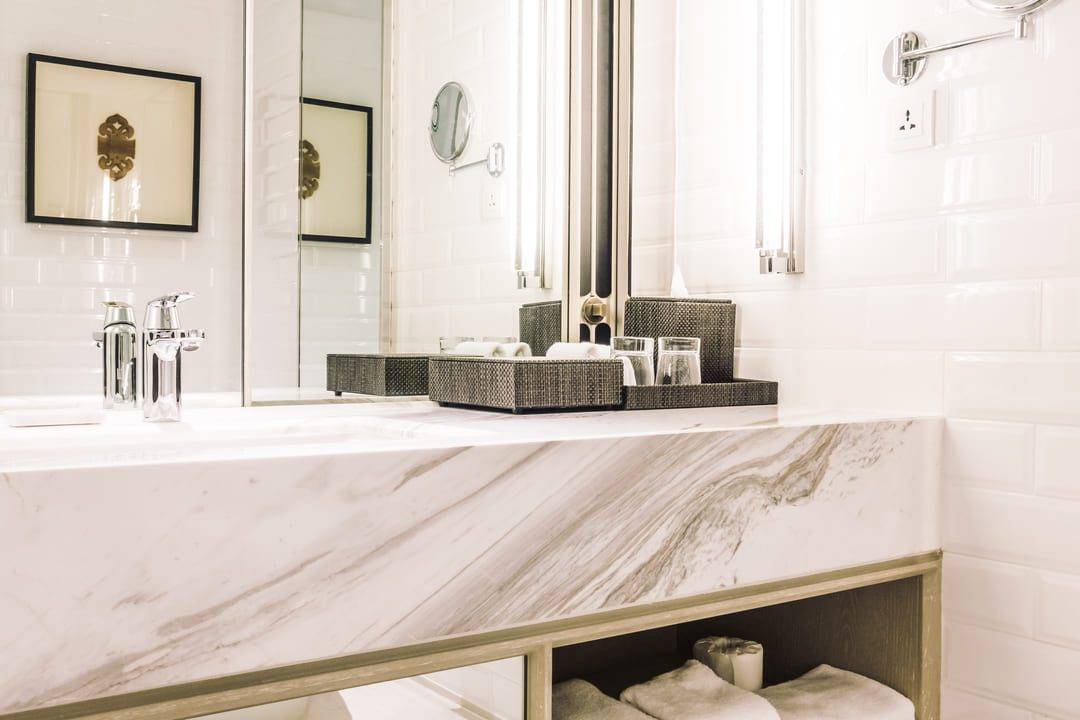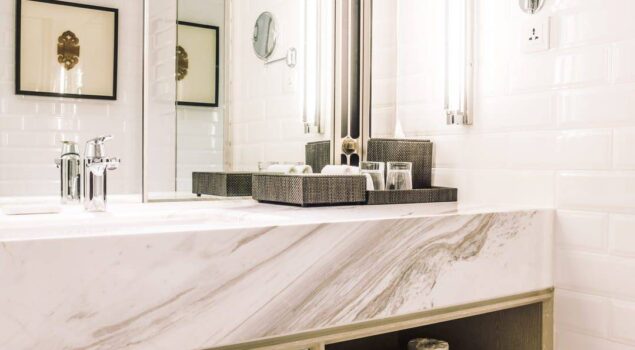
Types of marble finishes: the best choices
- 04/17/2024
- No comments
Do you know the types of marble finishes? Considered one of the most sophisticated natural stones, marble has a special place in projects. It is a material that conveys refinement and elegance to an environment, in any application.
However, ensuring a perfect finish is essential to have a beautiful, resistant structure that is in line with the design. For this reason, it is one of the most important steps to completing a project with excellence and great results.
If you’re in doubt about which marble finish to choose, don’t worry, we’ll help. Keep reading this post and see what the main types are and what to consider when choosing the ideal technique for the situation!
What are the main types of marble finishess?
Choosing a marble stone finishes is an extremely important process, as it impacts the appearance and decoration. Therefore, it is necessary to evaluate each possibility to identify the one that is most interesting for the project.
See below what types of finishes are and their characteristics!
Polished finishes
The polished finishes model provides a smooth and shiny surface to the marble piece, with a mirror-like appearance. It is the most used treatment and is ideal for making the environment sophisticated.
Levigated finishes
In the levigate model, the finish takes place with metallic abrasives, which wear down the stone until it reaches a smooth and opaque texture. Therefore, it is a type of semi-polished finishes and gives the piece a rustic appearance, with a different beauty.
Brushed finishes
With the use of Sic (Silicon Carbide) or diamond brushes that circulate over the piece, this finishes model creates a natural result on the marble. The outcome of the process highlights the natural tones of the stone and a surface with a light satin texture.
Side finishes
Used to treat the edges of a marble piece, side finish is a finishes touch on countertops, tables and other applications. In addition to improving appearance, they help preserve the structure, protect against accidents and optimize design.
Some examples of side finishes are
- Fine honed;
- Half miter;
- Beveled edge;
- Full bullnose;
- Half round;
- Half bullnose.
Rough finish
Also known as a natural finish, the rough model is carried out to maintain the natural appearance of the marble. To do this, the piece is simply sawn and applied to the project, very common in wall coverings.
How to choose the ideal type of finish for my project?
The possibilities for marble finishing are diverse, which makes the choice even more challenging. Despite this, some factors are essential to help identify the perfect model for the project and should always be considered.
Therefore, think about the following points when choosing the finish:
- evaluate the application of the marble piece;
- don’t ignore the decoration style;
- assess what type of marble it is;
- think about resistance and durability;
- use quality materials.
Have you noticed how diverse the types of marble finishes are?
Choosing the ideal one for each project is a determining step towards success. Therefore, evaluate each one carefully, use quality abrasives and obtain incredible results.
If you enjoyed learning about the types of marble finishes and want to continue reading incredible content, follow our social media! We are on Facebook, Instagram, LinkedIn and YouTube.
In short
What are the types of marble finishes?
- Polished finish;
- Levigated finish;
- Brushed finish;
- Side finishes;
- Rough finish.
How important is it to choose the ideal one?
Defining the ideal finish for marble is essential to guarantee a sophisticated design, compatible with the decoration of the environments and with due resistance.
How to choose the type of marble finish?
- Assess the application of the piece;
- Don’t ignore the decoration style;
- Think about resistance and durability;
- Use quality abrasive materials.



Leave a Reply